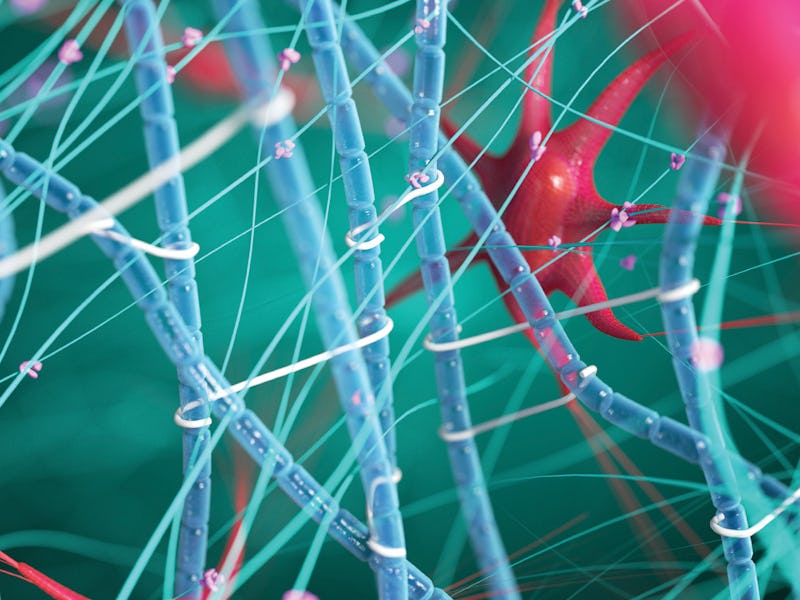This Plant-Based Liquid Bandage Stops Bleeding Instantly
It could be a vital tool in human trauma care.

By harnessing the naturally adhesive properties of plant polymers, Joe Landolina created a liquid bandage that works with the body’s own clotting process to stop bleeding when spread over a wound — pretty much instantly, and without the need to apply any pressure. The gel, which took second place at Sir Richard Branson’s Extreme Tech Challenge last month, broke into the veterinary market in 2015 and may be just one year away from FDA approval for human use.
Since the more or less accidental discovery seven years ago that sparked the blueprint for the bandage, Landolina has scaled the gel up into a company of about three dozen employees, Cresilon. The product is delivered through a syringe and can halt even sever bleeds in a matter of seconds. It comes with a wipe that easily disengages the product once it’s no longer needed.
“My grandfather was a chemist, and when he retired he started a winery,” Landolina tells Inverse. “I grew up with a chem lab right next door. I’d come off the school bus every day when I was very little and just watch him make wine, and when I started to get older he let me play in the lab every day. Probably a little more than he should have.”
As a teenager, Landolina attended a summer program studying cartilage regeneration at Columbia University. He was intrigued by the field, but soon found he couldn’t replicate the techniques he learned with any of the materials he had access to back home.
“I was limited to what I could go and find in nature,” he says. “There was a lot of property [and resources] on the vineyard.”
Trying to extract those organic materials, he stumbled across a gel derived from the sugar in common brown algae that would “snap back” together — change very quickly from a liquid to a solid while maintaining an adhesive nature. He realized that this was something that could be used to clot a wound, and got to work.
When applied directly to the source of the bleeding, the gel clots it instantly.
Landolina isn’t the first to harness this mechanism in algae — it’s used to solidify certain compounds, or to create a mechanism for drug delivery, or to thicken soups — but he’s the first to develop it in this direction. His primary objective is hemostasis, or being able to stop a bleed. VETIGEL™ being initially used in interoperative contexts among animals, like a nicked spleen during a spaying procedure on a dog, but once it’s FDA-approved he has his eye on human trauma care with a sister product, TRAUMAGEL™.
“This is a product that will be used in ambulances,” he says. “Used by the military, used in emergency rooms.”
He predicts that the military — specifically, the Special Forces — will probably adopt TRAUMAGEL™ first, after which it will proliferate out to the rest of the armed forces, and then to EMS agencies and fire departments. Most of the capital he’s now investing revolves around establishing work facilities — there are three — and on training employees and making sure everything is sufficiently safe and sterile, not unlike the environments you’d need to maintain if you wanted to design a vaccine.
The material is cheap, and there’s no need for elaborate equipment. The beauty is in the simplicity.
“It’s just a syringe with gel in it,” he says. “If it didn’t need to be FDA-regulated, this would be as simple as making hummus.”